Hot Bedding
This week: Split in Winter; Hot bedding; Rapid prototyping; Calibration in progress; Lots of leaves; Niche lights;
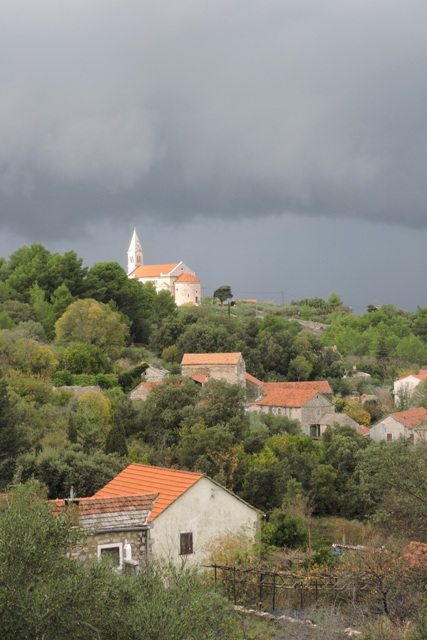
It has rained and rained this week. As I write this at tea time on Saturday, the rain is beating on the greenhouse roof outside.
We have had two short but intense thunderstorms this week too. They were both tall which meant that after they passed there was a layer of white Graupel, soft hail, everywhere.
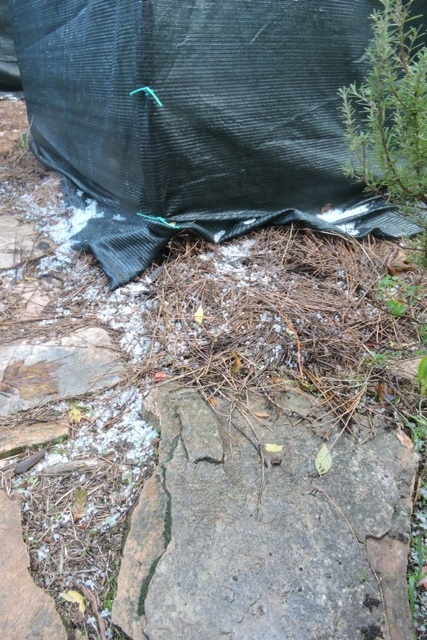

Even when it hasn’t been actually raining, the ground is too wet to work, so much of my week has been spent inside.
It looks as though we will have some sunshine at the start of next week, before the next waves of rain arrive.
Well a true Mediterranean winter climate is mild and wet. We are certainly living up to that maxim.
Split in winter
I travelled over to Split on Monday.
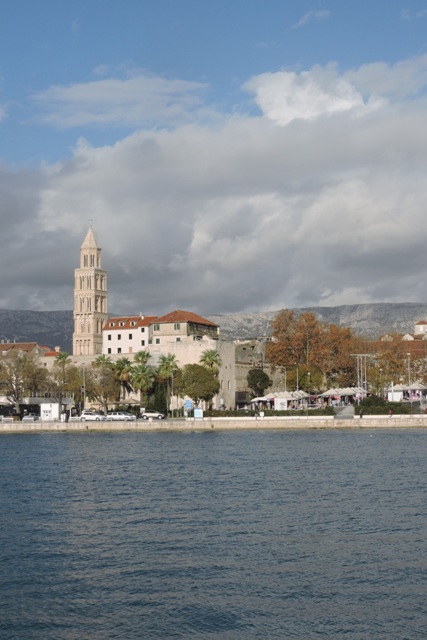
When I looked at my list of things which I need for my next few projects, and then at what I can get locally, I decided I needed to go shopping before Christmas.
I visited various stores to stock up on supplies, then I went up to the City Centre One Shopping Mall to look for some Christmas presents.
Afterwards I called at the Jadro garden centre next door and came away with a couple of plants.
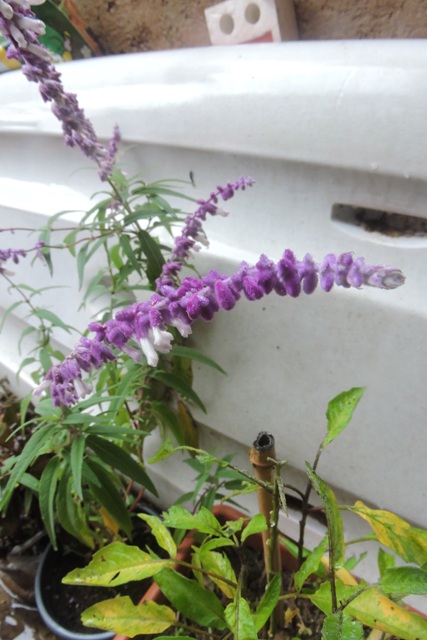
I have some corners to fill in the orchard flower bed and this winter flowering Salvia Leucantha will nicely fit into one of them.
After filling the car’s fuel tank, I was in the queue for the ferry by 12:30, so with two hours to wait before it sailed, I walked into the old town.
Once again I was left surprised by a dearth of people and the tiny “Christmas Fayre” on the Riva.
My first Christmas here was in 2014, and then the “Christmas Fayre” was along the whole of the 1 km long Riva, with kiosks on both sides.
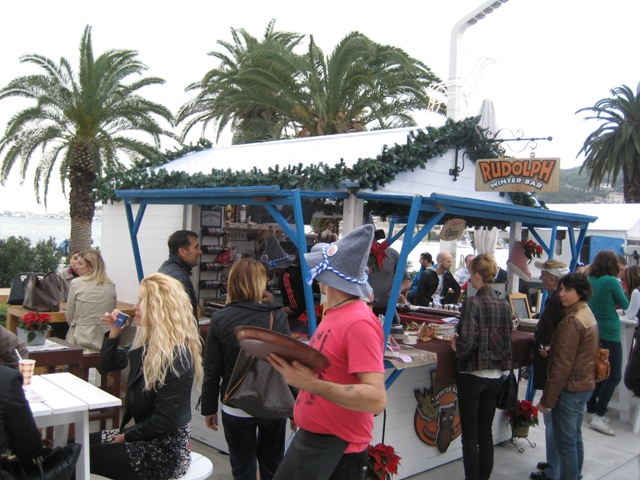
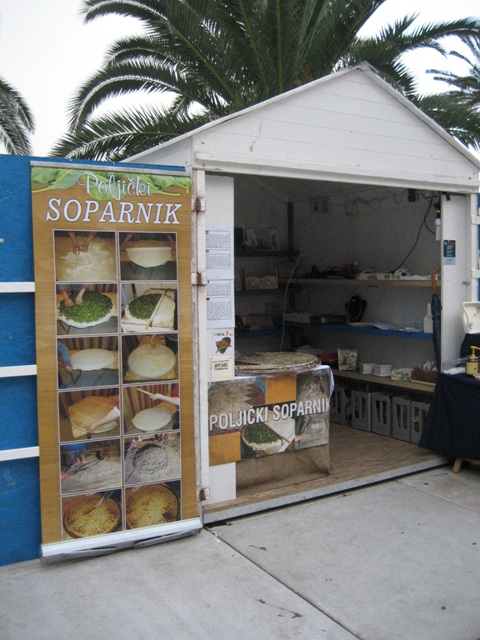
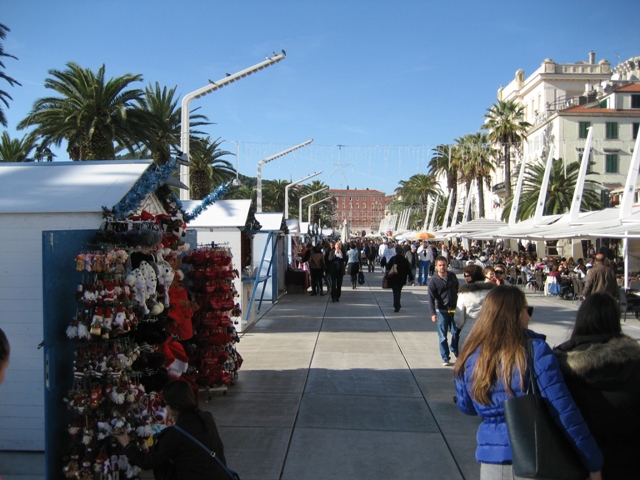
In 2022 it is a measly 10 stalls, on just one side, taking up about a quarter of the length and few shoppers.
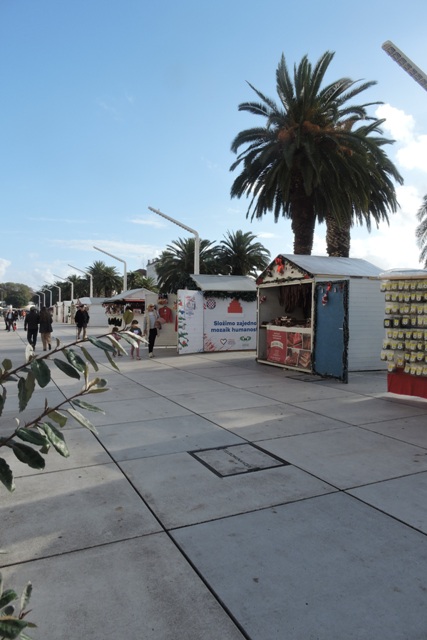
This is my first visit to Split in winter since the COVID pandemic, so I am not sure when the change took place.
The other point of note was that there were VERY few people about in the city.
From the conversations going on around me, there were some foreign visitors and a few locals, but just not the numbers seen a few years ago.
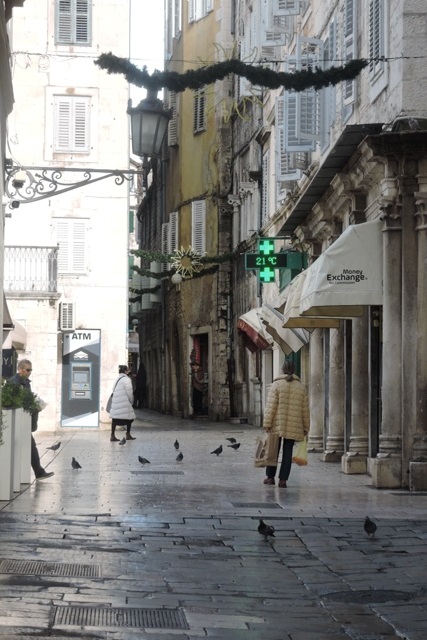
Elsewhere in the old town, there were just a few shoppers, many shops were shuttered for the winter even though it was an unseasonably sunny and warm 21ºC.
Inside the Diocletian Palace the Peristil, usually full of visitors with their guides, was almost empty.
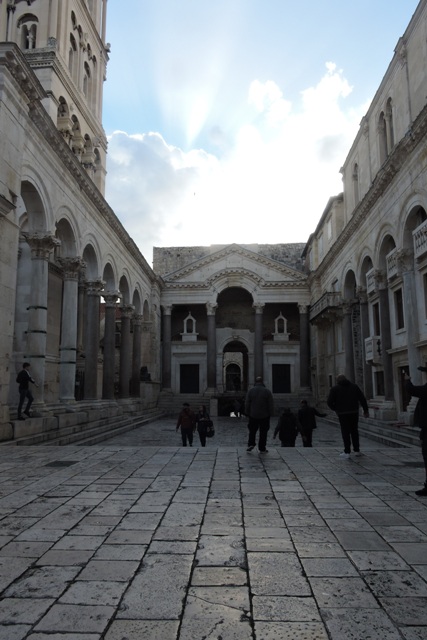
In the Green Market I found a man selling Poinsettia for €3 and Christmas Cactus, Schlumbergia, for €2. I used to have Christmas Cactus at home in the UK, but have never seen them for sale here.

At that price, if they both die by New Year, I won’t have lost much, and I will not be letting that happen! I would like to have a Poinsettia growing in the garden.

The ferry was as always exactly on time, so I settled down inside in a comfy seat for the two hour trip back home.
It was just a little too cool to sit outside on the upper desk.
Hot bedding
One of the reasons I went to Split was to go to the Pet Centar store, which is conveniently next to Bauhaus.
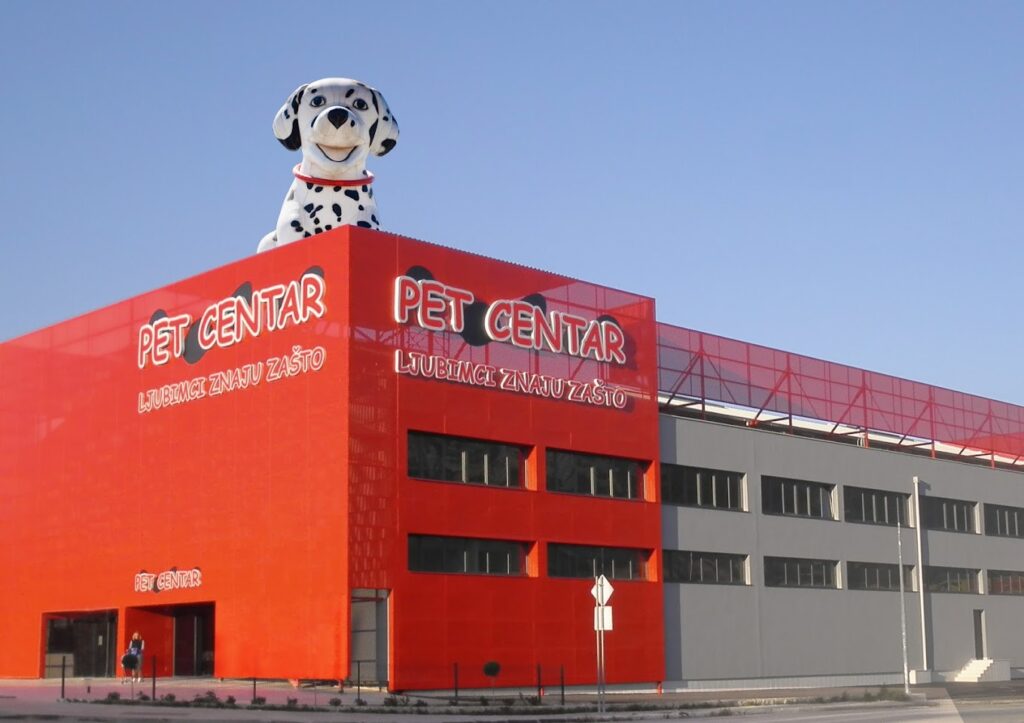
My senior feline Callie is an Arab Mau and came with me from Abu Dhabi.
The Arab Mau is recognised as a distinct breed in the feline world.
She has beautiful blue eyes and the classic Mau facial profile. With long legs, long pointed ears, oval paws and just a single coat of fur she is typical of the breed.
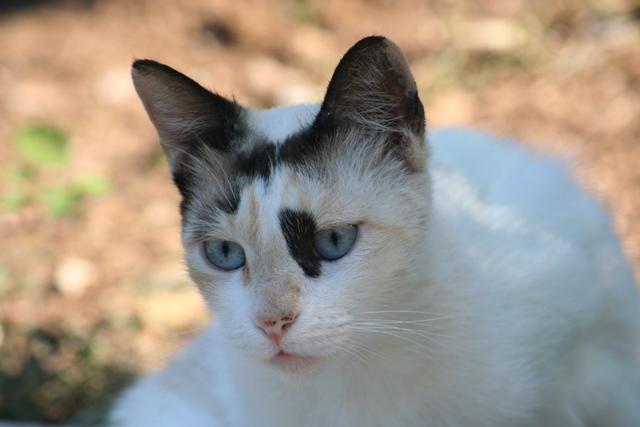
Most cats have two types of fur. They have a dense undercoat and then a secondary fur which is shed twice a year. In winter it is thick for added insulation, in summer a much lighter second coat is grown.
Because of not having a thick undercoat, Callie feels the cold, even the mild cold here in Hvar. In the summer she only comes in for meals and enjoys the heat.
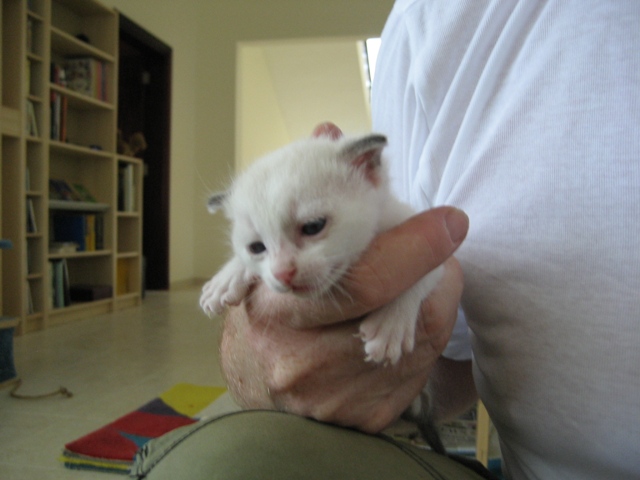
In winter she only goes out for a call of nature.
My four young adults, the kittens of two years ago, now have separate beds having outgrown the desire to sleep curled up together.
As Callie grows old, (she will soon be 12 which is 70 in human years) she has started to enjoy winter less and less.
When I was over in Split in October I found a lovely lambs wool lined cat bed and brought it home for her. She wouldn’t go near it, at any price.
Now the young adults or the baby of the family Živa curl up inside it.
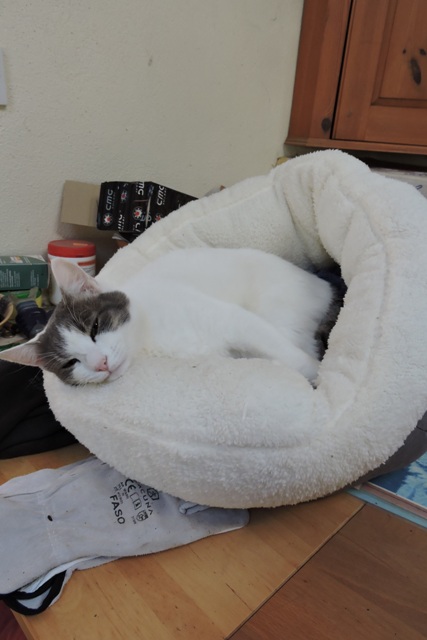
To be fair to Callie, the bed is perhaps a little on the small side for a long legged, senior cat!
Another trait of the Mau is a need to be as high as possible.
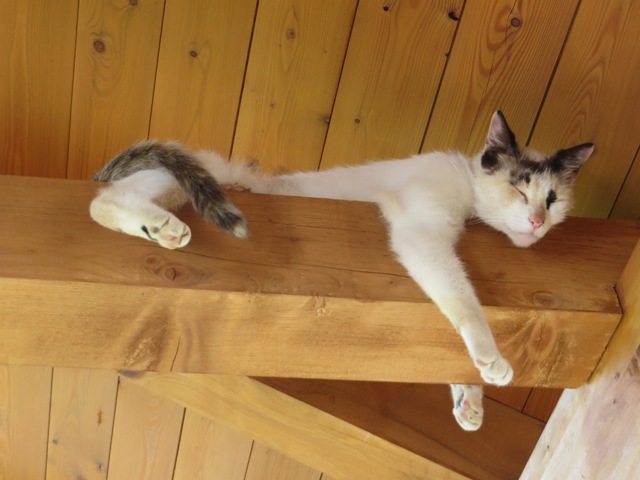
This has meant that Callie would jump up onto the top of my book cases to go to sleep, in a bed I put there for the purpose and to be close to the wood stove.
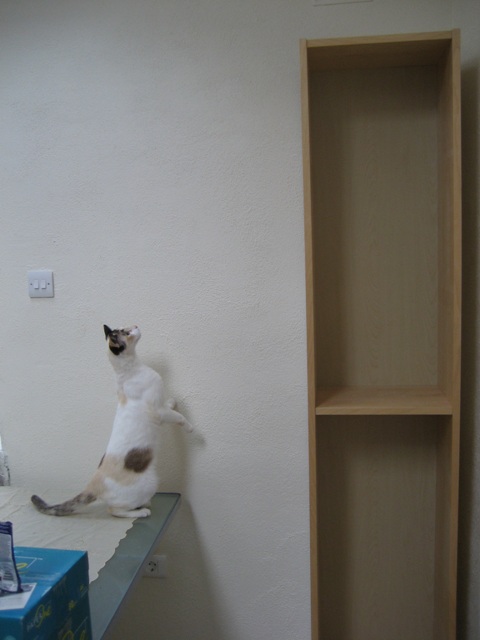
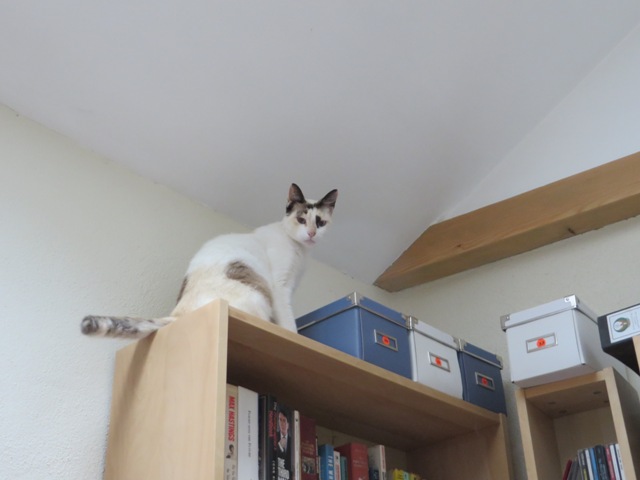
This year she is not doing as much jumping either. So I came back on Monday with another larger, soft and comfortable bed for her.

She has avoided it. Even when I put her food in the bed, or a hot water bottle, she has perched on cardboard box and has looked miserable.
On Wednesday evening I found Callie had moved a log out of the near empty log basket, right next to the fire. She was squashed between the remaining chunks of wood.
I moved all the logs out, put her blanket in the basket and she curled up and went to sleep.
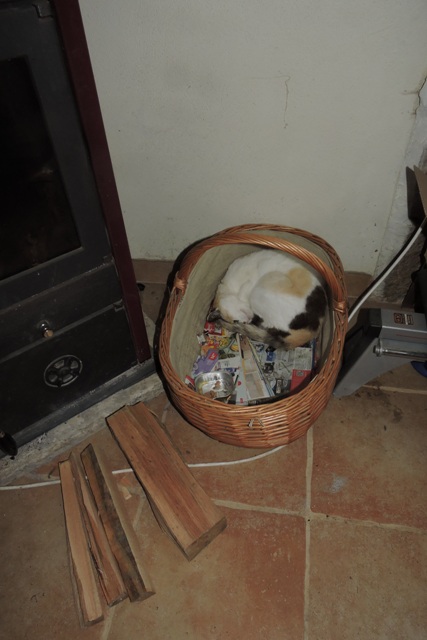
One of the young adults has claimed the new bed as well.
I think Callie will be in the log basket until the spring.
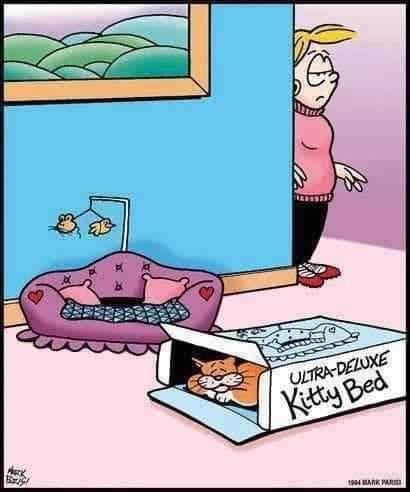
Do you remember the “Hot desking” concept? Well this could be described as “hot bedding”, just like hot desking only more comfortable.
Now I need another log basket!
Rapid prototyping
Rapid Prototyping is a new engineering practice where both individuals and companies use a 3D Printer to make a three dimensional model of something designed in a CAD programme.
These machines can create 3D objects in plastic, metal and even chocolate!

While I was setting up my new weather station, I was thinking about where the new sensor array will be deployed.
The ‘Y’ shaped sensor array needs to be mounted on a 5cm diameter mast. This is more than double the diameter of the mast my existing system is on.
I have a number of Pine poles, however I need to join two together to elevate the sensor array above the surrounding trees and buildings.
My thoughts had been around fixing the 2.5 meter bottom pole to the corner of my Stevenson Screen and I had thought about making a swinging hinge to join the two poles together.
I need to be able to access the sensor array, for things like cleaning the rain gauge.
I had thought that with two bolts, one as a hinge and one locking the two poles together, I could make my idea work.
However, the more I thought about making the joint between the two poles, the more difficult I decided it would be.
So as I was thinking about options, I came up with the idea of using a sliding sleeve over the two poles and to use thermoplastic water pipes for the sleeve.
These pipes are strong, rigid, readily available here and I had several in my spares stock.
BUT (isn’t there always at “but”), the pole diameter is 6 cm and the inside diameter of the pipes is 7 cm.
So I needed a sleeve within the sleeve, so to speak.
I used one of my digital callipers to measure the thickness of the plastic pipe walls, and they were precisely 2.25mm.
Multiply this by 4 and it adds up to a total of 1cm: This is exactly the difference between the wooden poles and the outer sleeve!
So using some small pipe offcuts, I cut a section out of two tubes to reduce their diameter, then slid them onto a pole and tried the outer sleeve.
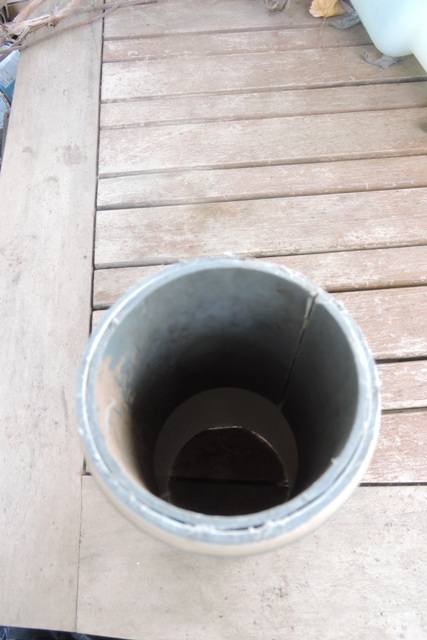
It was a perfect fit. I had my solution for getting a working joint between the two poles and it was all achieved with some very basic engineering and rapid prototyping.
Calibration in progress
I have taken my time to correctly set up my new weather station this week.
There are two Parrot soil moisture sensors, four temperature and humidity sensors and a lightning detector, solar and UVI, as well as the usual anemometer, wind direction vane and rain gauge.
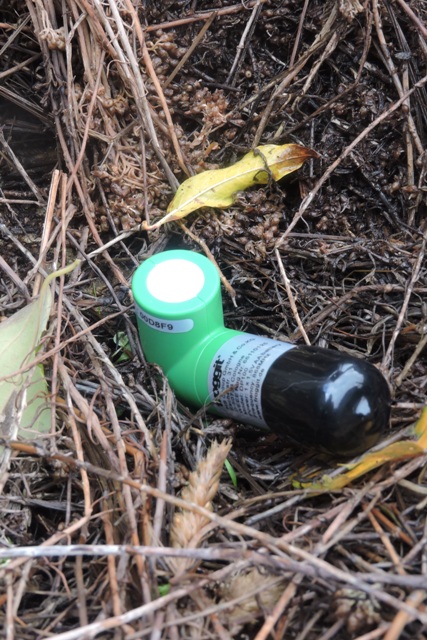
With some new batteries from Bauhaus installed in all the sensors, I left everything in the same place to settle down before turning the base station on.
All the sensors were reading exactly the same, accurate to 0.1ºC. So that was the first test passed.
Conveniently we even had a two thunderstorms pass through on Wednesday to test the lightning detector.
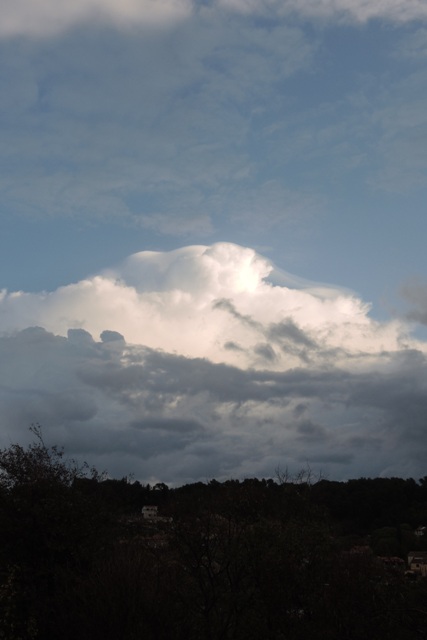
I spent some time looking at nearby government “Level 1” stations to get the barometric pressure, and then did the calculation to see if I needed to adjust my setup.
There was no need because the complete system was working extremely accurately straight out of the box.
While the sensors were going through their Beta testing, I started to mount the bottom pole to the Stevenson screen.
I have buried a purpose built bracket in concrete as the base, but the pole still needed fixing to the bracket with a 10mm bolt.
After drilling the hole for the bolt in the post, I then marked around a “penny washer”, which will be the interface between the pole and the bracket.
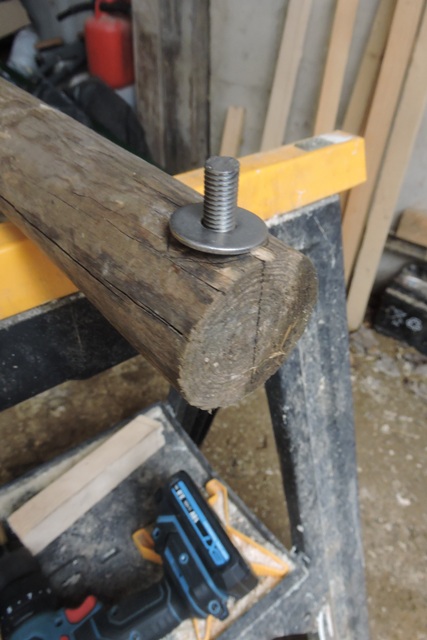
With my router I cut a 1.5 mm deep circle in the wood for the washer and treated the cuts with wood preservative.
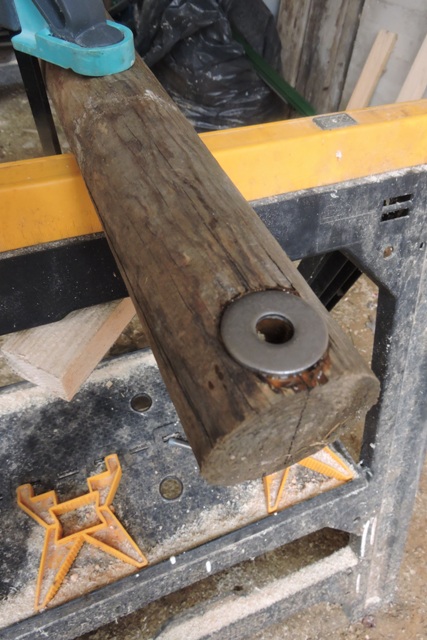
To be completely accurate, the sensor array must be absolutely horizontal, which means the pole needs to be absolutely vertical.
I had already ordered the 6 cm diameter post clamps and cut some threaded ENOX bar to mount to the posts to the Stevenson Screen.
With a long spirit level I made sure everything was true before drilling the posts and then fitting and fixing the clamps.
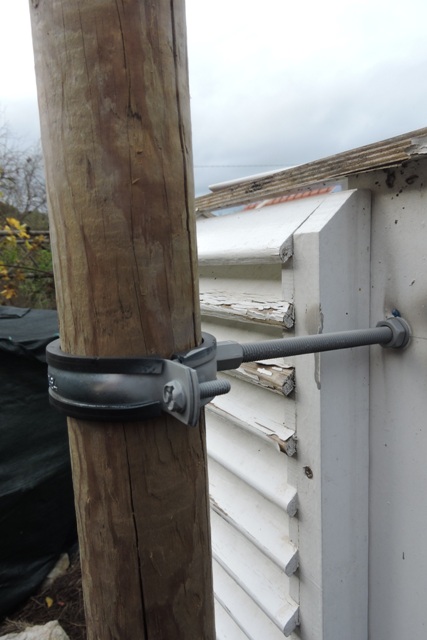
I am not going to complete the installation until the station has been running for a few days, so if I need to make any adjustments, I can easily get to the sensors.
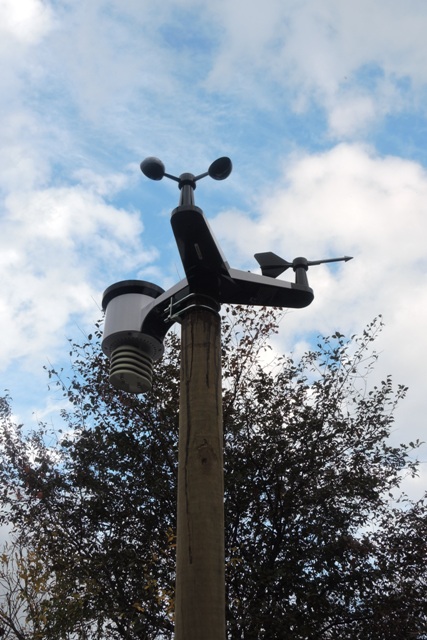
The station is working and uploading data, but it is not publicly viewable yet. That will happen when I have the system in its final position.
Lots of leaves
This really has been a most unusual autumn.
The rains only started in November and since they began, there have been few dry days.
The actual amount of rain has not been excessive and has only brought us up to about where we should be at this point in the year.
However the six months from April with virtually zero rainfall and excessive heat, has stressed the plants and trees.
Because the early winter has been warm, leaves on deciduous trees are only now starting to change colour and fall.
The storms and wind this week have removed most of the leaves on the Fig trees. One day they were they, the next they have almost gone.

In the orchard, Pears, Medlars and Morello cherries still have most of their leaves, although they are rapidly changing colour.

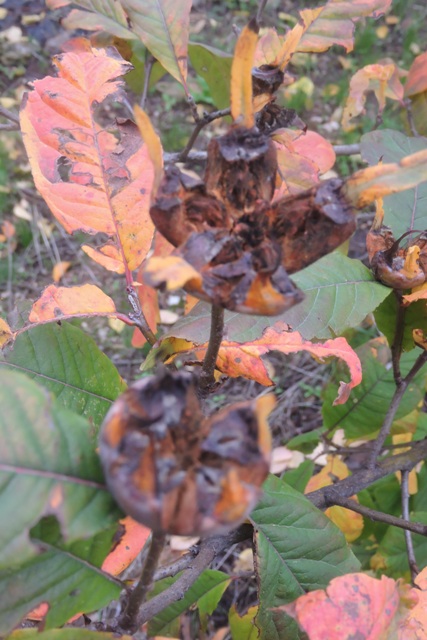
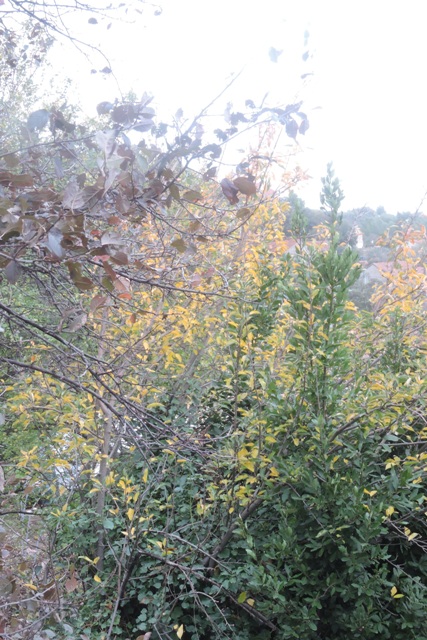
Most of my soft fruit trees still have most of the leaves. The apple in particular is still well clothed, even though the leaves are a lovely golden colour.
In the courtyard, the columnar Japanese Flowering Cherry, Prunus amanagawa, is also still holding onto its leaves. How much longer for, I don’t know.
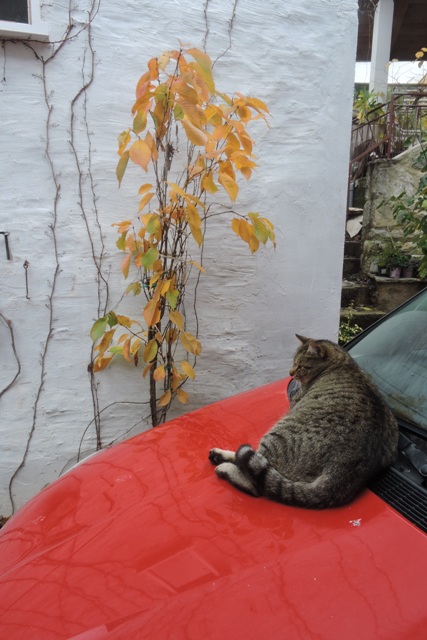
At the other end of the scale the first spring bulb has flowered this week. These are the Daffodil Tazetta Ziva, comonly known as Paper Whites. They are three weeks ahead of normal.
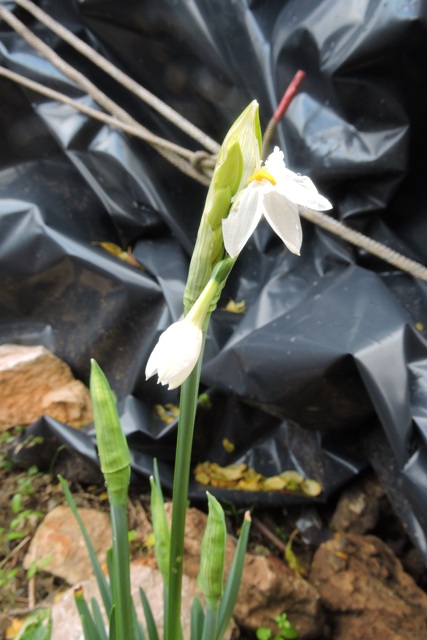
So as we move into winter, the fruits of the past year are still very much in evidence, just as the very first flowers of spring are making their appearance.
Niche lights
As New Year approaches, I’m already thinking about next year’s projects.
The top of my list is to finish the big Konoba.
The work which was done in 2021 has been superb. The room is snuff dry and always feels warm when you go in.
Now is about time I changed its use from just a storage area to a usable and active living space.
During the summer when I had some help, I moved a lot of the things that I was storing inside the Konoba.
This means that now a lot of what is inside the room is furniture which is destined for the room when it is finished.
Earlier in the year I found the right LED light fittings I need for the room and they have sat there waiting to be installed.
On a very rainy Friday, it seemed like the right time to begin the electrical installation.
This room was where the wine making took place and where there was a press for olives, together with storage for produce.
Looking at the old outside walls, three distinct walls are clearly visible.
The current building, which is well over 140 years old, has clearly been built on the foundation walls of a much older buildings.
The outside walls show three very distinct styles of construction and use of stone.
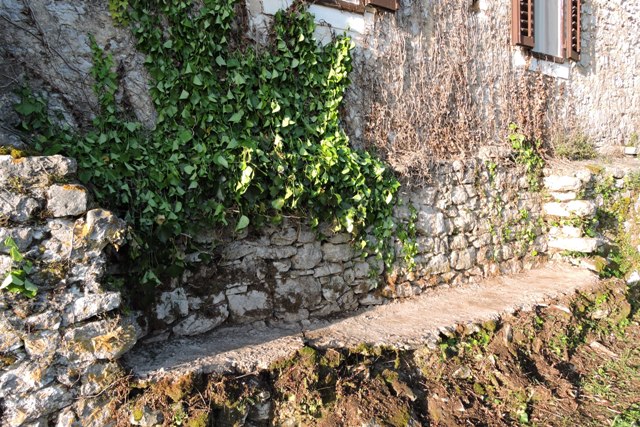
Inside there are a number of wall niches. In places the sold walls are over 1 meter thick and some of the niches are 60 cm deep.
After I had the walls sandblasted and before the stonework was repointed, I inset the wiring, to provide lights in each of the dark niches. At the time though I couldn’t find any low profile lights.
I eventually found some very nice 2.5 cm thick LED lights. Every niche light is on the same switched circuit, so they are joined in a single parallel electrical circuit.
Starting with the end light, I drilled into the stone lintel over the niche and then fixed the lights. I am using small 5 amp white junction boxes, to try and make the electrics almost invisible.
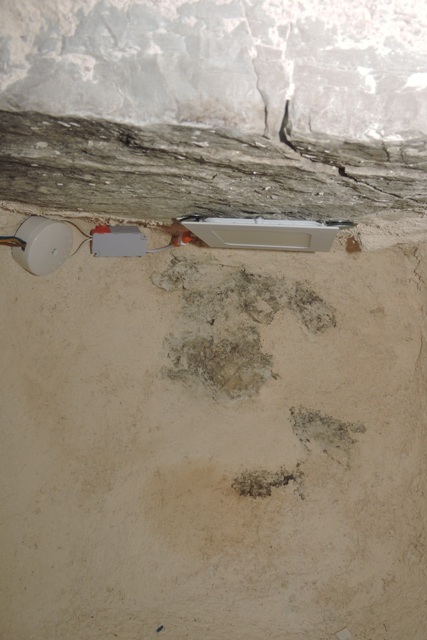
Drilling into the very hard stone was difficult because there was not enough room form my large SDS drill.
So instead I used a much older hammer drill, which took a lot of effort and much longer to cut the holes for the plugs.
With the first niche finished, I moved to the next one and connected it up to a wall socket to try the light.

It worked and actually is very effective, giving off a yellow light, not the bright white you sometimes get with LED lights.
I moved on to install two LED spot lights in the largest niche.
This was actually a window onto the yard where the donkey stable was.
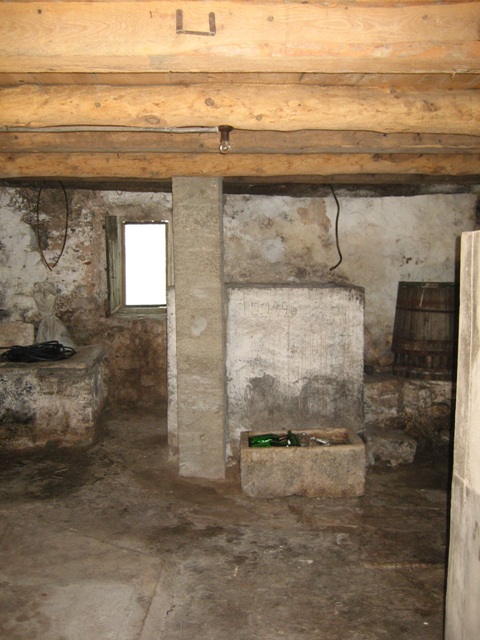
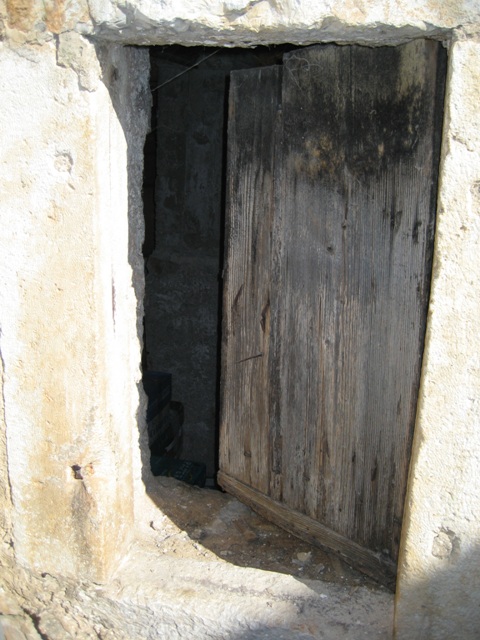
When I moved in there was no glass, just a rough wooden door and it was an early job before my first winter, to make a frame and fix some glass.
I needed to try and make the Konoba weatherproof!
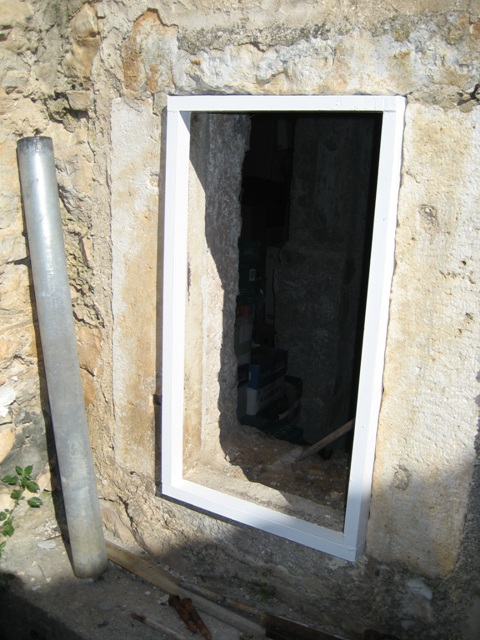
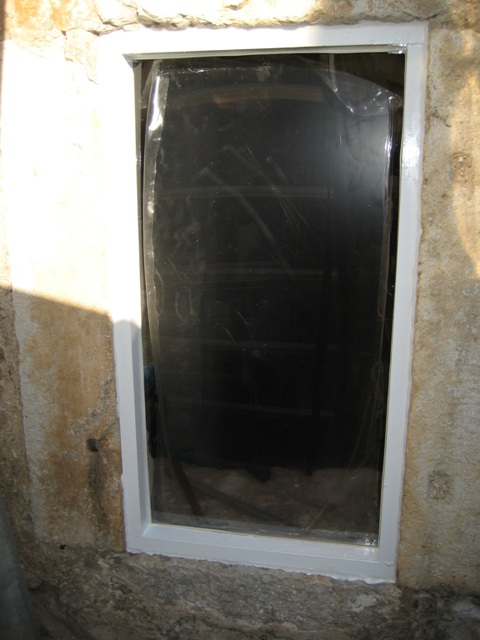
Building the new workshop where the stable and yard had been, meant a window was no longer needed.
However rather than block it up completely, I had the centre part filled in, but I kept the lovely stone work on each side.
It is a really fiddley job trying to wire the junction boxes but to keep the wiring to the bare minimum so it is unobtrusive.
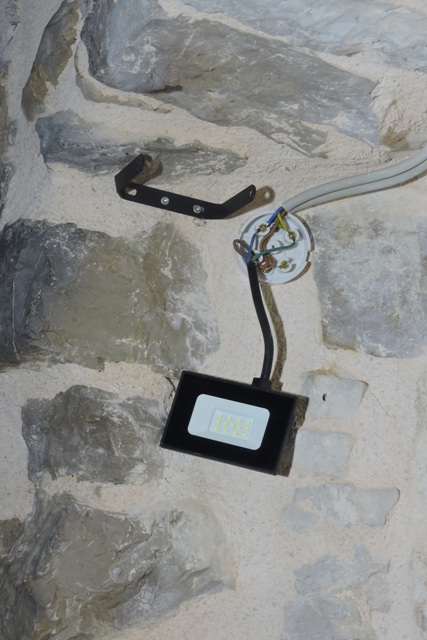
One I had the small spot lamps in place, it was time for another test.
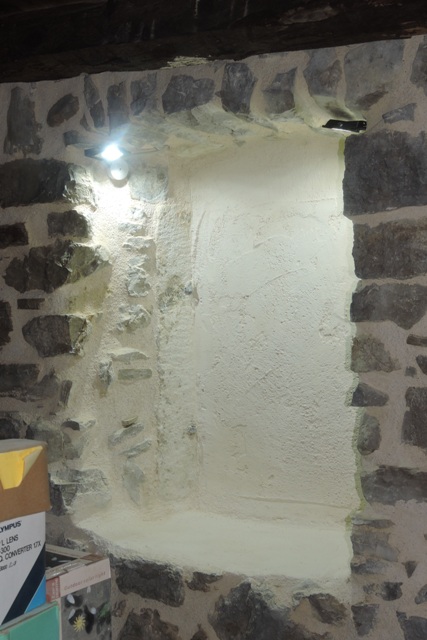
If you were wondering what I might put into the niches, I have a fairly endless supply of interesting artifacts which will fill the spaces and will look nice when illuminated.
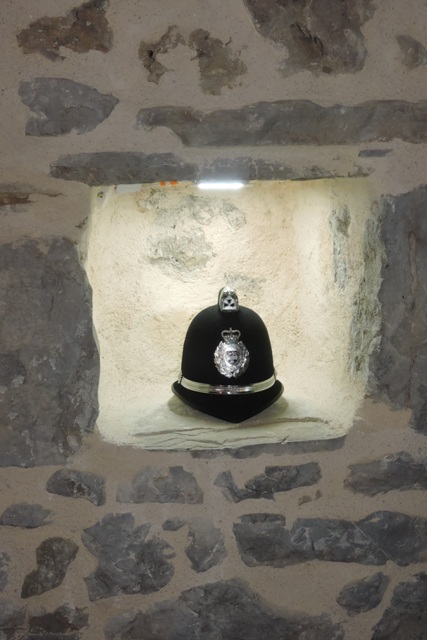
Cvjetko has been round and we have discussed the project, especially the inside staircase to connect the Konoba with the rest of the house.
The project will start in the New Year, so watch this space…. NCG
2 Responses
John Bailey
Interesting read Norman.
Andy Robinson
Love the helmet in the niche. Some brilliant work done on your home Norman.